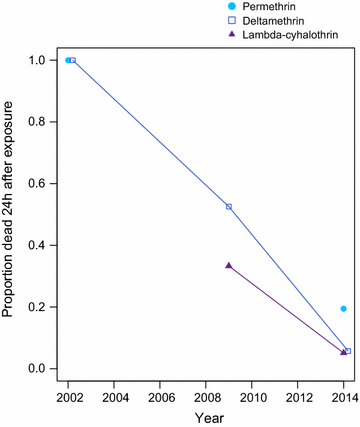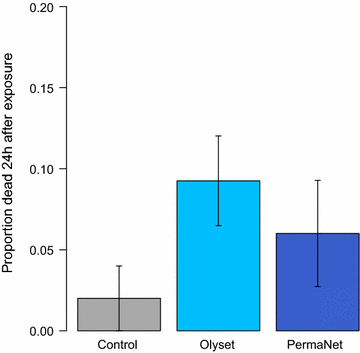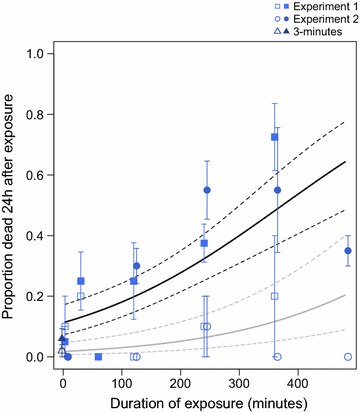Long-lasting insecticidal nets no longer effectively kill the highly resistant Anopheles funestus of southern Mozambique
- PMID: 26242977
- PMCID: PMC4524426
- DOI: 10.1186/s12936-015-0807-z
Long-lasting insecticidal nets no longer effectively kill the highly resistant Anopheles funestus of southern Mozambique
Abstract
Background: Chemical insecticides are crucial to malaria control and elimination programmes. The frontline vector control interventions depend mainly on pyrethroids; all long-lasting insecticidal nets (LLINs) and more than 80% of indoor residual spraying (IRS) campaigns use chemicals from this class. This extensive use of pyrethroids imposes a strong selection pressure for resistance in mosquito populations, and so continuous resistance monitoring and evaluation are important. As pyrethroids have also been used for many years in the Manhiça District, an area in southern Mozambique with perennial malaria transmission, an assessment of their efficacy against the local malaria vectors was conducted.
Methods: Female offspring of wild-caught Anopheles funestus s.s. females were exposed to deltamethrin, lambda-cyhalothrin and permethrin using the World Health Organization (WHO) insecticide-resistance monitoring protocols. The 3-min WHO cone bioassay was used to evaluate the effectiveness of the bed nets distributed or available for purchase in the area (Olyset, permethrin LLIN; PermaNet 2.0, deltamethrin LLIN) against An. funestus. Mosquitoes were also exposed to PermaNet 2.0 for up to 8 h in time-exposure assays.
Results: Resistance to pyrethroids in An. funestus s.s. was extremely high, much higher than reported in 2002 and 2009. No exposure killed more than 25.8% of the mosquitoes tested (average mortality, deltamethrin: 6.4%; lambda-cyhalothrin: 5.1%; permethrin: 19.1%). There was no significant difference in the mortality generated by 3-min exposure to any net (Olyset: 9.3% mortality, PermaNet 2.0: 6.0%, untreated: 2.0%; p = 0.2). Six hours of exposure were required to kill 50% of the An. funestus s.s. on PermaNet 2.0.
Conclusions: Anopheles funestus s.s. in Manhiça is extremely resistant to pyrethroids, and this area is clearly a pyrethroid-resistance hotspot. This could severely undermine vector control in this district if no appropriate countermeasures are undertaken. The National Malaria Control Programme (NMCP) of Mozambique is currently improving its resistance monitoring programme, to design and scale up new management strategies. These actions are urgently needed, as the goal of the NMCP and its partners is to reach elimination in southern Mozambique by 2020.
Figures



References
-
- WHO (2012) World Malaria Report 2012. World Health Organization, Geneva. http://www.who.int/malaria/publications/world_malaria_report_2012/en/
-
- WHO . Global plan for insecticide resistance management in malaria vectors. Geneva: World Health Organization; 2012.
Publication types
MeSH terms
Substances
LinkOut - more resources
Full Text Sources
Other Literature Sources
Research Materials

